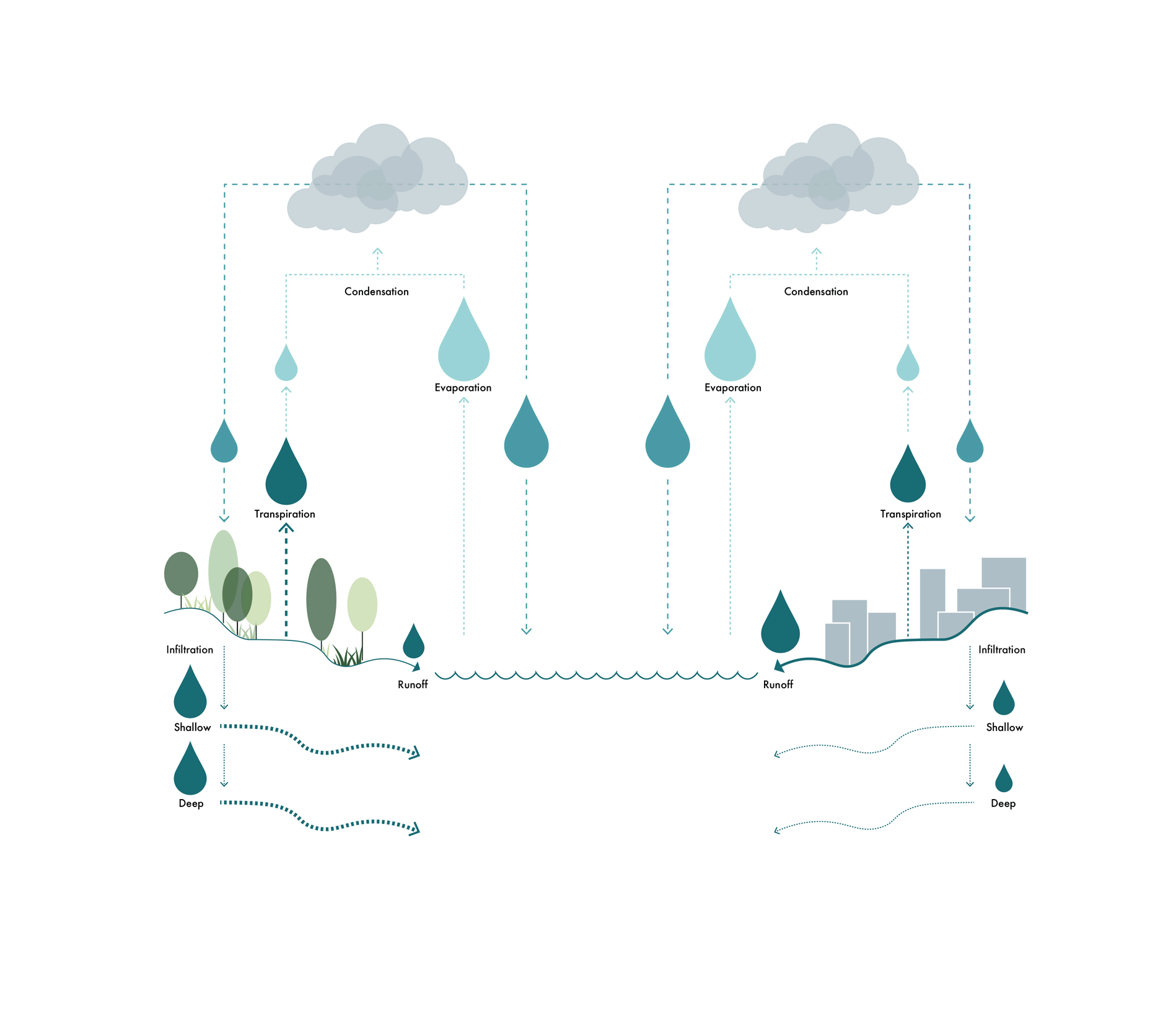Water Sensitive Urban Design
“Take thought, when you are speaking of water, that you first recount your experiences, and only afterwards your reflections.“
Leonardo da Vinci, cited in Dreiseitl and Grau (2005, p. 9)
Public spaces, such as squares, playgrounds and streets, have been designed as dry surfaces to be accessed at any given time. However, due to the projected increased frequency of extreme weather events, urban sewer systems will become unable to sufficiently drain greater quantities of water, and flooding in the city will occur more often. Additionally, sewage backflows can lead to floods, even where no water is visible (Stokman, 2019). With many conventional water management systems located underground, people are unlikely to understand and appreciate stormwater management (Hoyer et al., 2011).

Back to a Natural Water Cycle
Consequently, urban spaces must incorporate decentralised rainwater management, combining drainage and retention, as well as water purification systems (Stokman, 2019). If integrated visibly and pedagogically while considering ecological, social, and aesthetic qualities, these systems can change the public perception and induce acceptance, in addition to promoting the intelligent and responsible use of water (Hoyer et al., 2011). Therefore, the objective is to combine the demands of both urban planning and sustainable stormwater management by transitioning the current urban water cycle to a more natural one. The interdisciplinary field of Water Sensitive Urban Design (WSUD) offers strategies to combine water management, urban design, and landscape design while enhancing ecological, economic, social, and cultural sustainability (Hoyer et al., 2011). By implementing these strategies, children can learn about and experience water sensitivity in public spaces or playgrounds that incorporate water sensitive design, thereby developing a greater understanding of water cycles in the built environment. Correspondingly, Hoyer et al. (2011) have formulated the following five principles to ensure successful and decentralised storm-water management: Water sensitivity, aesthetics, functionality, usability, and public perception and acceptance.
From a child’s perspective, stormwater solutions need to be incorporated playfully, pedagogically and safely into the public realm. Water sensitive urban design provides strategies that can be adapted at any scale.